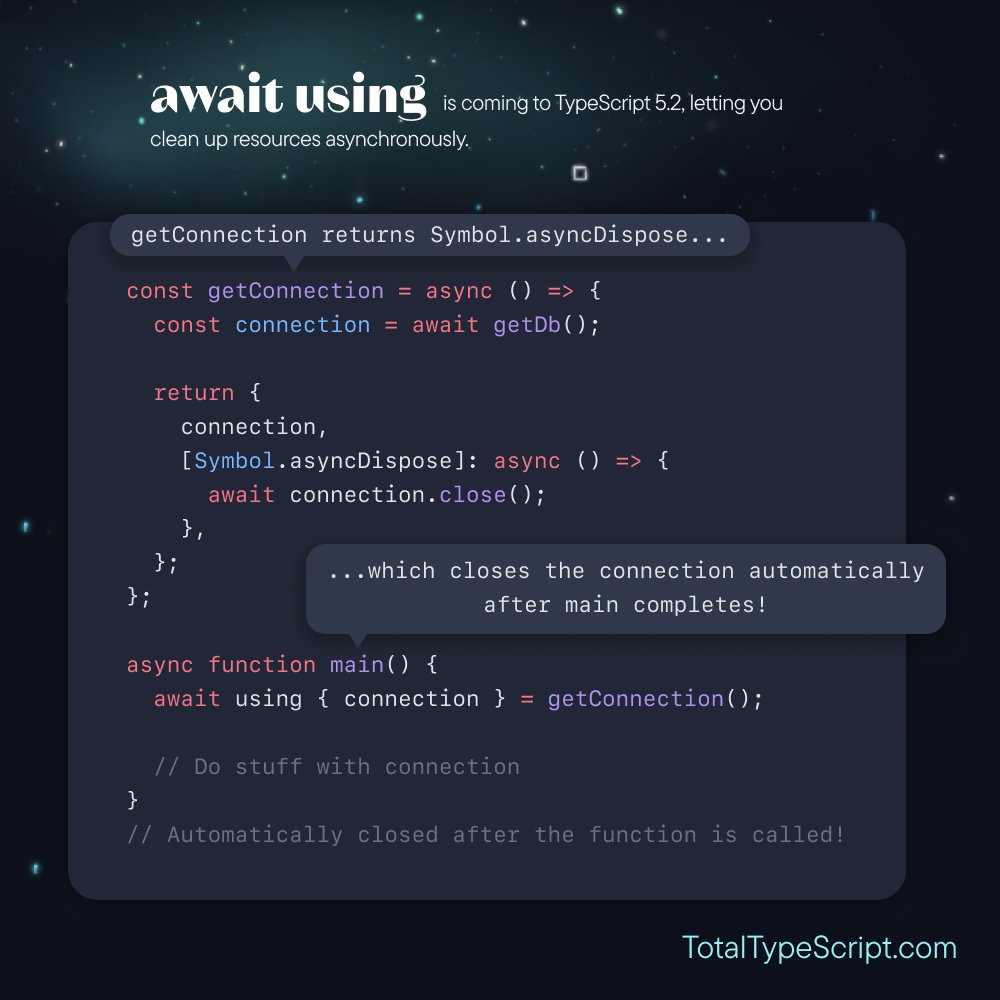TypeScript 5.2 introduces a new keyword - using - that you can use to dispose of anything with a Symbol.dispose function when it leaves scope.
{
const getResource = () => {
return {
[Symbol.dispose]: () => {
console.log('Hooray!')
}
}
}
using resource = getResource();
} // 'Hooray!' logged to console
This is based on the TC39 proposal, which recently reached Stage 3 (out of 4) in its progress to JavaScript. This means that it's ready to be tested by early adopters.
using will be extremely useful for managing resources like file handles, database connections, and more.
#
Symbol.dispose is a new global symbol in JavaScript. Anything with a function assigned to Symbol.dispose will be considered a 'resource' - "an object with a specific lifetime" - and can be used with the using keyword.
const resource = {
[Symbol.dispose]: () => {
console.log("Hooray!");
},
};
#
You can also use Symbol.asyncDispose and await using to handle resources which need to be disposed asynchronously.
const getResource = () => ({
[Symbol.asyncDispose]: async () => {
await someAsyncFunc();
},
});
{
await using resource = getResource();
}
This will await the Symbol.asyncDispose function before continuing.
This will be useful for resources such as database connections, where you want to ensure that the connection is closed before the program continues.
#
#
Accessing the file system via file handlers in node could be a lot easier with using.
Without using:
import { open } from "node:fs/promises";
let filehandle;
try {
filehandle = await open("thefile.txt", "r");
} finally {
await filehandle?.close();
}
With using:
import { open } from "node:fs/promises";
const getFileHandle = async (path: string) => {
const filehandle = await open(path, "r");
return {
filehandle,
[Symbol.asyncDispose]: async () => {
await filehandle.close();
},
};
};
{
await using file = await getFileHandle("thefile.txt");
// Do stuff with file.filehandle
} // Automatically disposed!
#
Managing database connections is a common use case for using in C#.
Without using:
const connection = await getDb();
try {
// Do stuff with connection
} finally {
await connection.close();
}
With using:
const getConnection = async () => {
const connection = await getDb();
return {
connection,
[Symbol.asyncDispose]: async () => {
await connection.close();
},
};
};
{
await using db = await getConnection();
// Do stuff with db.connection
} // Automatically closed!



